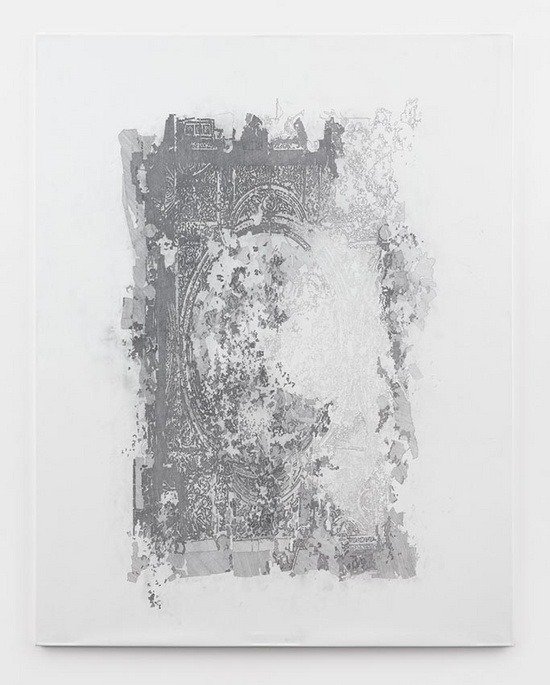
By taking architectural floorplans from the first, published
encyclopaedia as a source for seven large scale works made of graphite and
acrylic, Guillermo Kuitca sets up an enquiry into the processes and history of
organizing knowledge. Encyclopaedias exhibit the best impulses of human
curiosity but also carry inherent doubt and contingency . Kuitca’s large and
impressive canvases appear to scatter original drawings of neo-classical
buildings into intricate fragments as if we are observing a puzzle being
re-assembled on a floor. While aspects of ‘Encylopedie VII’ remains coherent
and identifiably reproduced from an original, printed plate, other areas of the
image appear to be in a state of chaotic collapse. ‘Untitled’, 2010 is a work almost measuring 2 by 4 metres and occupies a room to itself, but unlike the
other pieces in the series, this image is taken to the edge of legibility.
Details are so atomised that the original source becomes elusive.
There is a familiar, contemporary technique here of digital imaging
because these fragments are so confidently severed from each other as if Kuitca
had applied ‘desktop’ strategies to manipulate copies. These enlarged and
altered architectural plates, retrieved from history, extend Kuitca’s ongoing
interest in epistemology, which he locates within the impulse to collate
comprehensive information together .
In an adjoining gallery, the artist was exhibiting untitled
paintings that extend the same theme within a contrasting formal style. These
canvases mimic the painterly, analytic brushwork of cubist painting and yet
originate in unidentified maps. Like the scattered architectural plates, these
paintings reconfigure pictorial facts. However, these abstract paintings almost
lose any power of communication except for lines of paint in red and yellow
that may suggest roads or landmarks on a map. The viewer is left with a series
of painterly marks that conflate analytic description with instinctual
expression. Our bearings are lost as we are left with implied information
within images seemingly driven by subjectivity.
Kuitca’s works inspired by the invention of the enclycopaedia
brilliantly opens up a post-modern dialogue around meaning and authority, but
the reconfigured maps are overly conceptual and are left adrift in a deep gap
between invention and quotation so that they feel contrived and inert.
No comments:
Post a Comment